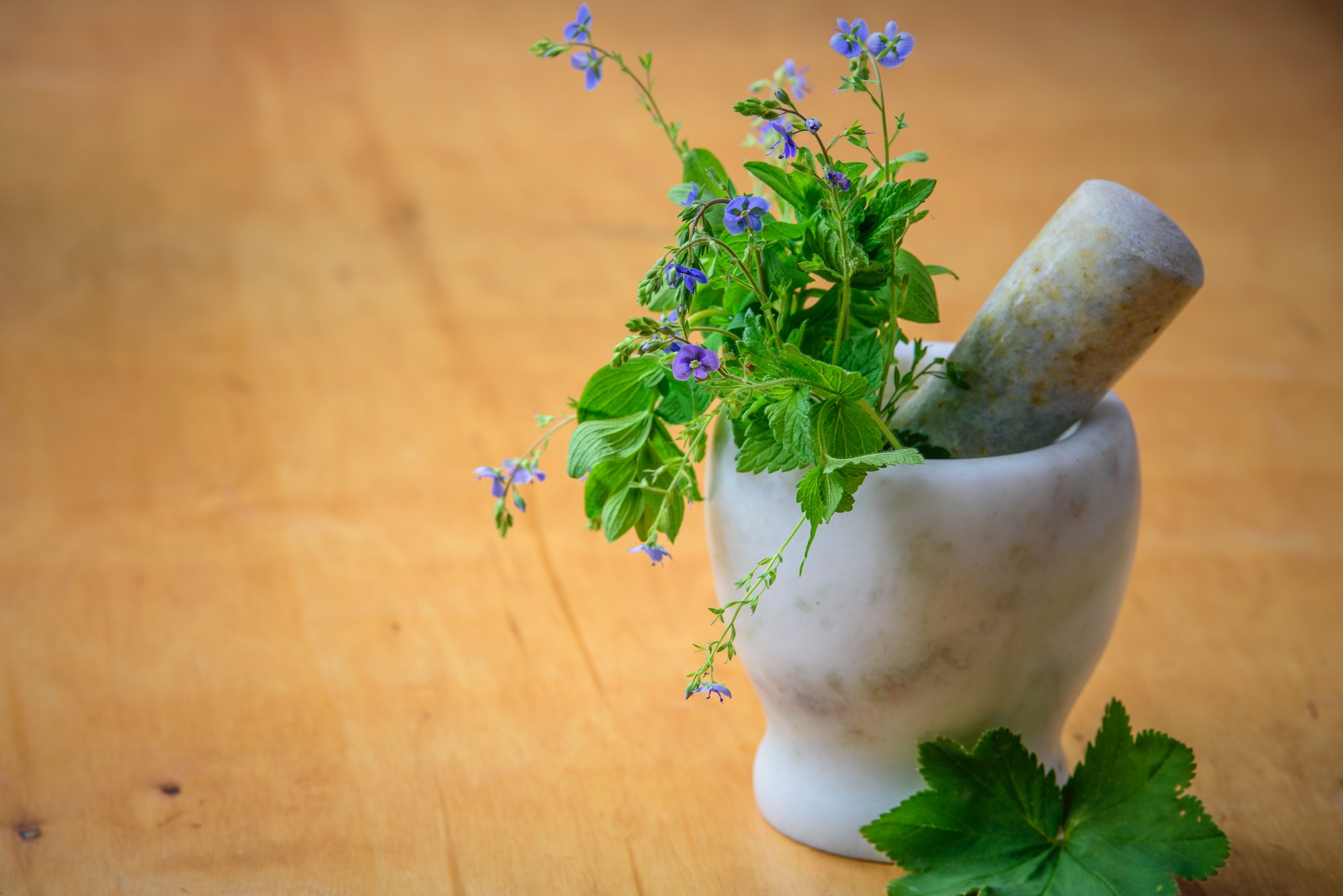Ayurveda is the ancient Indian science of natural healing. It believes that all of us are born with an inherent physical constitution (Prakriti) that gives us some natural inclinations and advantages. If we live our life in accordance with these natural tendencies we will live successful, healthy lives. However, due to misinformation, suppression, or other reasons we may digress from our ideal lifestyle and nature which can imbalance our natural constitution (Vikriti). This is the root cause of disease in Ayurveda – deviations from our true nature. That is why Ayurvedic treatments begin with lifestyle recommendations to help you bring your energies (Doshas) in balance.
In this blog, I will explain these basic concepts and terms of Ayurveda. Once you’re well versed with these foundational concepts, your will derive more from your readings of Ayurveda. And I hope that’ll allow you to unlock their essence.
What is Ayurveda
Ayurveda is the study of nature – both external and internal, for the purposes of healing and longevity.
How does Ayurveda work?
It tries to restore balance in our inherent nature, so we are not in conflict with our environment or ourselves. Ayurveda identifies our nature by calculating the proportion of Doshas that we are born with.
What are Doshas?
Doshas are the three biological humors found in everyone. They are Vata, Pitta, and Kapha.
- Vata is the kinetic energy of the body and is a mix of air and space.
- Pitta is fire and water and represents the metabolic and digestive capacity of the body.
- Kapha is the potential energy which is a mix of earth and water. It provides structure, stability, and grounding.
These Ayurvedic Doshas are present in different proportions in all of us. Some of us will be more Vata dominant and some may be more Pitta dominant and some more Kapha dominant. The exact proportion of these Ayurvedic Doshas in us is called our Prakriti or constitution.
What is Prakriti or Ayurvedic Constitution?
Prakriti is your Ayurvedic personality type, which is a result of the unique proportion of the three doshas in your body. It is defined at the time of your conception itself and is influenced by the influence of the three doshas on your parents at that time. Your Prakriti decides what type of body structure, hair type, metabolism, digestion, etc. that you will be born with. We cannot change our inherent Prakriti just like we cannot change the color of our eyes or the size of our nose. It is our blueprint.
Ayurveda believes that as long as you stay in alignment and harmony with this nature, you will be happy and healthy. But if you’re constantly in conflict, trying to be someone else, trying to fit into someone else’s idea of good health or body type, you will create imbalances that can result in disease and ill-health.
Unfortunately, this is often what happens in our world, where children are forced to adapt to their parents’ wishes in terms of their career or interests which leads to lifelong suppression of a child’s inherent nature. As grown-ups, we do this to ourselves, when we struggle to make fundamental changes to our body, wanting to be taller, wishing we had a leaner frame, different teeth, or trying to change things we have learned to not like about ourselves because the society taught us so. In this race, we forget that we’re all unique and that we’re meant to be different not look-alikes of only one perfect body type.
That’s what Ayurveda recognizes, that there’s no one size fits all approach, that each situation requires its own independent investigation as well as a customized treatment.
How many Personality types are there?
We all have these doshas with-in us but in different proportions. Some of us may be more dominant in one dosha than the other two. It is also possible that two doshas are equally dominant than a third one. In this manner, seven primary personality types are recognized in Ayurveda:
Pure Personality types
- Pure Vata – Air element is the most dominant
- Pure Pitta – Fire element is most dominant
- Pure Kapha – Earth element is most dominant
Dual Personality Types
- Vata-Pitta
- Pitta-Kapha
- Kapha-Vata
Tridoshic Personality Type
- Vata-Pitta-Kapha (all doshas are in balance by birth, very rare)
Example: A pure Vata personality type means, such a person will have a dominant air element. However, this does not mean that you’re going to have all Vata diseases. This simply means that Vata is dominant in the personality and will not harm you as long as it is maintained at the same level at which you were born. Just like a poisonous insect does not die of its own poison, we will not be impacted by the dosha. Unless it becomes abnormal.
To know your Ayurvedic Personality Type or Prakriti, take this quiz.
How does a Dosha become abnormal?
By poor lifestyle, environment, trauma, lack of exercise, overeating and so on.
It’s important to know that it is statistically impossible for the entire world to be defined by these seven categories. These ayurvedic personality types can manifest with a great degree of variation in people and should be looked at as a guiding principle when assessing yourself or others. These 7 archetypes are powerful tools for an Ayurvedic assessment, but one should use them wisely and it is very easy to fall prey to our preconceived notions and biases.
What is Vikriti?
This is the mix of Doshas in your body as of today. Prakriti was what you were born with, Vikriti is the state of your body today. If Prakriti and Vikriti are same you’re in harmony with yourself and your nature and would be generally happy and healthy. If there’s a lot of variation in the two then there’s an imbalance which Ayurveda will then attempt to correct through lifestyle interventions.
To know your Vikriti, take this quiz here.
Does this mean I can’t change who I am? That everything is pre-decided?
As per Ayurveda, you can’t change your physical attributes but you can change your personality. You can’t fundamentally change your physical body. But you can change your mindset. And this mindset in Ayurveda is called Manas Prakriti or your mental constitution. It is not measured in doshas but by three more subtle and pure forms of energies called Gunas.
What are Gunas in Ayurveda?
Gunas are three subtle forces of nature that represent equilibrium, activity, and inaction. These are Sattva, Rajas, and Tamas. Sattva is the preferred mental state in Ayurveda as it represents light, truth, harmony, universal love, and a positive mindset. Achieving a sattvic state is the ultimate aim of all yogic, and spiritual pursuits.
Rajas is activity, it represents action, passion, movement, and heat. Rajas is needed to conduct our day to day activities. In excess, it can result in anger, restlessness, or violence. Tamas is inertia, it represents inactivity, sleep, darkness, and grounding. We need it to rest, recover and go to sleep which is very important for our health. But in excess, it results in lethargy, depression, ignorance, and attachment.
Like doshas, we’re all born with a unique mix of all these Ayurved Gunas which was decided at the time of conception itself. Your mental constitution can be made more sattvic by practicing yoga, meditation, eating a wholesome sattvic diet, reading good books, keeping the company of saints, and so on.
Summary
So, in a nutshell here’s what we learned
- Ayurveda is a science of natural healing
- It wants to keep you in harmony with yourself and your environment
- It does that by ensuring you do not stray too far from your true nature (Prakriti)
- And if you do, it brings you back to balance through lifestyle recommendations including, diet, herbs, exercises, massages, and other treatments
- While your physical constitution is more or less fixed, your mental constitution can be changed.
- Mental constitution is changed by practices like yoga, meditation, and mindful living.
- It is the aim of all spiritual practices, and also Ayurveda to help the mind attain a sattvic state. The ultimate stage of human evolution.
Hope you enjoyed reading this article! If you’re interested in Yoga, I have also written down answers to the most common yoga questions I receive, in this blog.
To stay up to date on my content, newsletters, and other updates, you can subscribe here.







